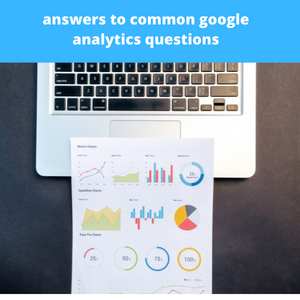If you’ve ever wondered about the hierarchical structure of a Google Analytic account, you’ll be happy to learn that the account has many levels. The highest level is called the Account, which is the point of access to your Analytics account. You can have more than one account if you like. The next level is called the Property, which refers to your website, mobile app, or device. Each level of the Analytics account can have users. Each user has different permissions.
Account > Property > View
When it comes to analyzing data, there are several levels in Google Analytics. First, the account hierarchy is defined by how you access data. You can create as many accounts as you wish. For a business, it is best to create one account per entity. You can then use the same account to manage the different sites and keep data organized. Secondly, account hierarchy determines the level of access each view has.
The account is the management level at which you access Analytics. It can be personal or organizational. Within an account, you can create views, properties, and mobile applications. Each property can be assigned multiple views, each containing unique data. A website can have as many as 25 different views. The account is divided into several sublevels, each with different capabilities. However, an analytics account has several properties. Each property represents a unique tracking code snippet.
Dimensions
The following article describes how to add dimensions to your Google Analytics reporting. Using custom dimensions is an excellent way to improve your reporting. Custom dimensions are a great alternative to labels, VLOOKUP Excel templates, and extensive campaign naming taxonomies. They’re designed to apply to all of your campaigns, and remain consistent in the long run. Secondary dimensions add a hierarchical structure to your reporting, allowing you to drill down from product line to department.
When creating a report, you can organize metrics and dimensions into rows and columns. Measures are quantitative measurements. The metrics are the number of users, session duration, and pageviews. By default, the report will show information about visitors in three dimensions: session duration, pageviews, and user sessions. However, you can also select a single metric for each dimension. This means that you can measure everything from total page views to bounce rates in one report.
Mediums
In Google Analytics, you’ll find a hierarchy of reporting options called Mediums. Each one represents a different way you’re attracting visitors. A medium can be a specific type of payment structure, like Paid Search, Display Ads, Social, or Email. The difference between a Medium and a Source is that the former represents high-level groupings while the latter refers to more detailed descriptions. While Mediums are not necessarily equivalent to traffic sources, comparing Events of different Categories will not be meaningful.
Mediums are one of the most general data dimensions in Google Analytics. By default, Google Analytics records three default values: organic, referral, and non-search engine clickthrough. If you need to track more specific values, you can create a campaign parameter called utm_medium. However, you must always note that a campaign tagged link falls under the “Other” Medium.
Individual Qualification
You can prove your understanding of Google Analytics and its fundamental concepts by earning the Individual Qualification in Google Analytics. The course covers topics such as planning and principles, implementation and data collection, configuration and administration, conversion and attribution, and metrics and dimensions. To earn this certification, you must pass a rigorous exam. If you’ve passed the test, you can download a certificate and start measuring your website’s traffic. Afterward, you can apply for a Platform Partner status, which is required for any business.
You must complete a comprehensive course on Google Analytics before you take the Individual Qualification in Google Analytics certification exam. It is highly recommended that you take Google Analytics for Beginners as it is a pre-requisite to take the Advanced Google Analytics course. Then, take the Individual Qualification in Google Analytics exam to prove your knowledge and competence. Once you’ve passed the test, you can leverage the power of Analytics within your organization. The course consists of 70 questions.






